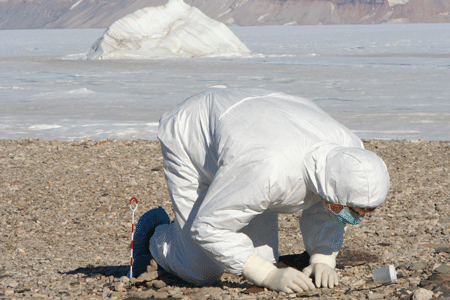Who can call themselves the indigenous people of the Arctic? A new DNA study of current and former inhabitants of Greenland, Arctic Canada, Alaska, the Aleutian Islands and Siberia provides the answer.
We know people have lived in the New World Arctic for about 5,000 years. Archaeological evidence clearly shows that a variety of cultures survived the harsh climate in Alaska, Canada and Greenland for thousands of years.
Despite this, there are several unanswered questions about these people: Where did they come from? Did they come in several waves? When did they arrive? Who are their descendants? And who can call themselves the indigenous peoples of the Arctic?

We can now answer some of these questions, thanks to a comprehensive DNA study of current and former inhabitants of Greenland, Arctic Canada, Alaska, the Aleutian Islands and Siberia, conducted by an international team—including researchers from DTU Systems Biology—headed by the Centre for GeoGenetics at the Natural History Museum of Denmark, University of Copenhagen. The results have just been published in the leading scientific journal Science.
Crossing the Bering Strait
The North American Arctic was one of the last major regions to be settled by modern humans. This happened when people crossed the Bering Strait from Siberia and wandered into a new world. While the area has long been well researched by archaeologists, little is known of its genetic prehistory.
In this study, researchers show that the Paleo-Eskimo, who lived in the Arctic from about 5,000 years ago until about 700 years ago, represented a distinct wave of migration, separate from both Native Americans—who crossed the Bering Strait much earlier—and the Inuit, who came from Siberia to the Arctic several thousand years after the Paleo-Eskimos.
“Our genetic studies show that, in reality, the Paleo-Eskimos—representing one single group—were the first people in the Arctic, and they survived without outside contact for over 4,000 years”, says Lundbeck Foundation Professor Eske Willerslev from Centre for GeoGenetics at the Natural History Museum, University of Copenhagen, who headed the study.
“Our study also shows that the Paleo-Eskimos, after surviving in near-isolation in the harsh Arctic environment for more than 4,000 years, disappeared around 700 years ago—about the same time when the ancestors of modern-day Inuit spread eastward from Alaska”, adds Dr. Maanasa Raghavan of Centre for GeoGenetics and lead author of the article.

Migration pulses into the Americas
In the archaeological literature, distinctions are drawn between the different cultural units in the Arctic in the period up to the rise of the Thule culture, which replaced all previous Arctic cultures and is the source of today’s Inuit in Alaska, Canada and Greenland.
“Our study shows that, genetically, all of the different Paleo-Eskimo cultures belonged to the same group of people. On the other hand, they are not closely related to the Thule culture, and we see no indication of assimilation between the two groups. We have also ascertained that the Paleo-Eskimos were not descendants of the Native Americans. The genetics reveals that there must have been at least three separate pulses of migration from Siberia into the Americas and the Arctic. First came the ancestors of today’s Native Americans, then came the Paleo-Eskimos, and finally the ancestors of today’s Inuit”, says Eske Willerslev.